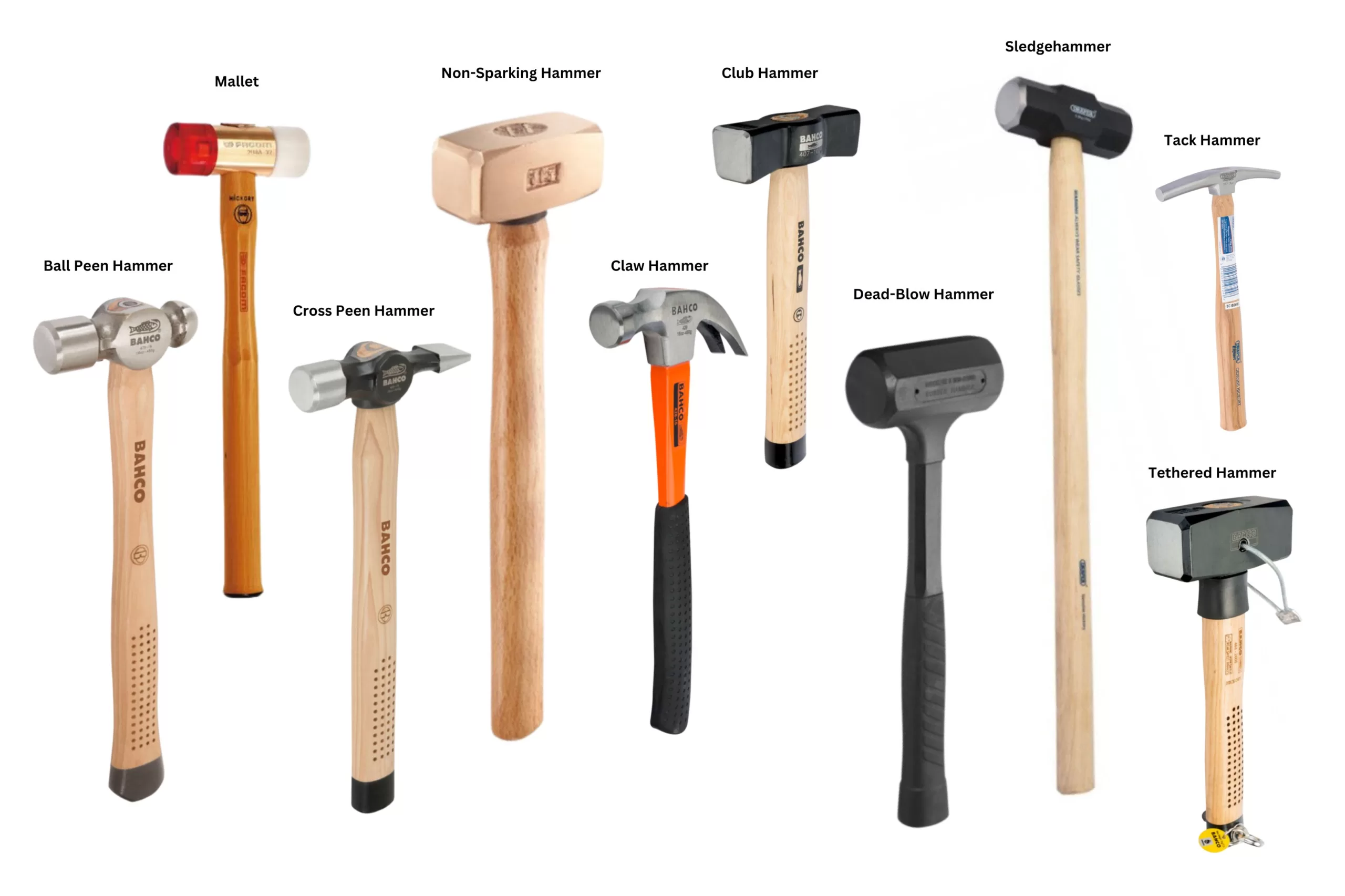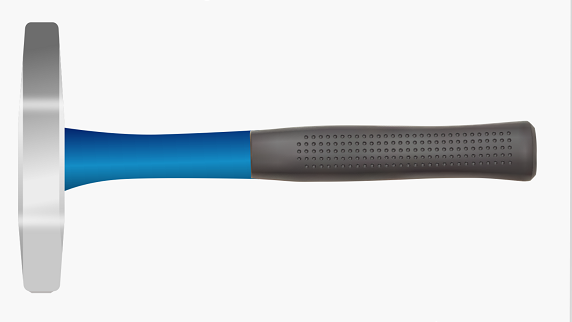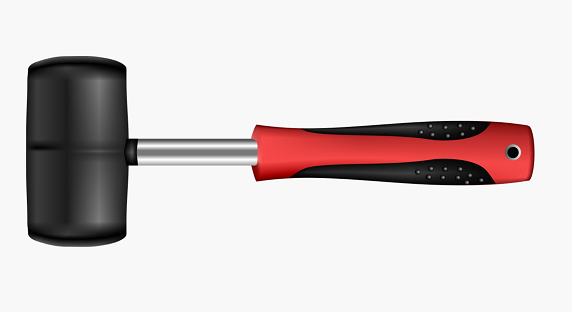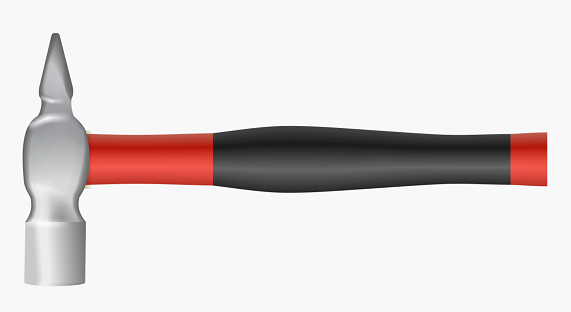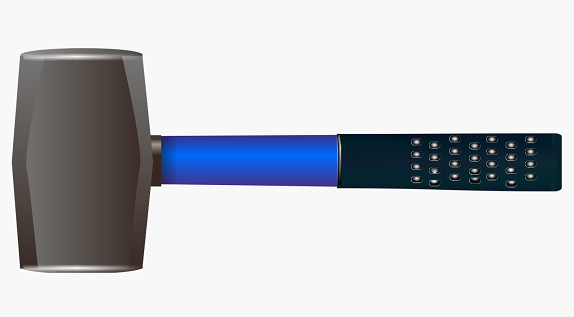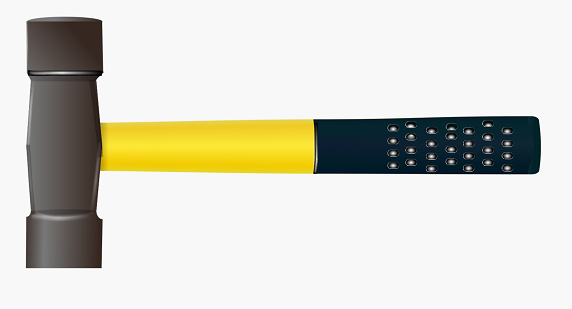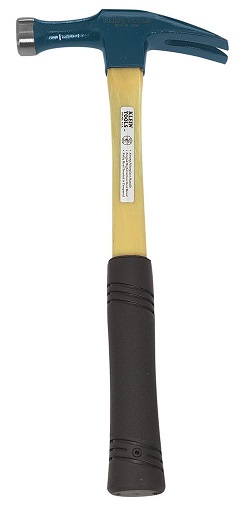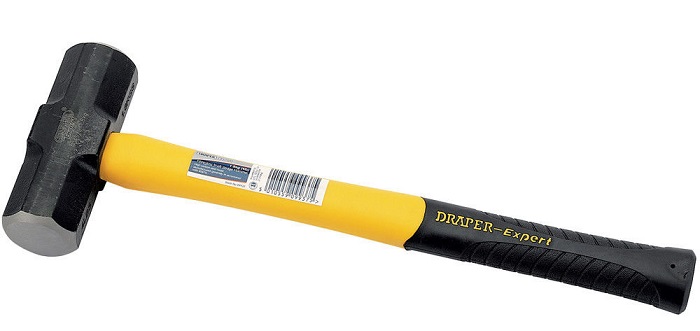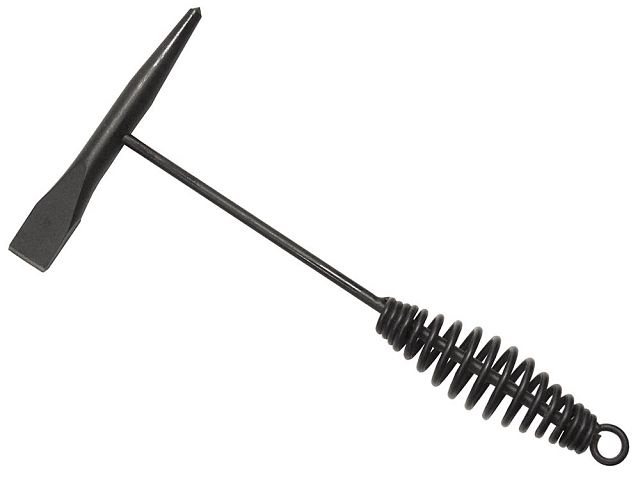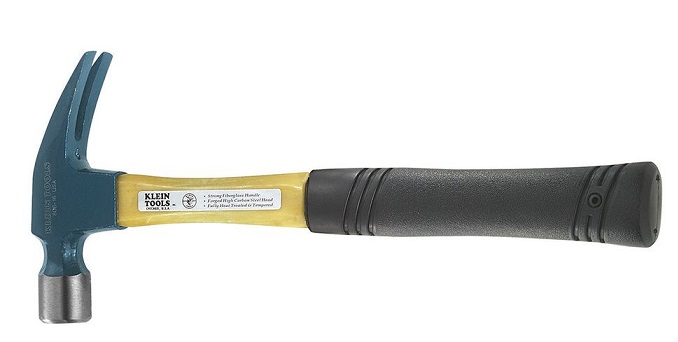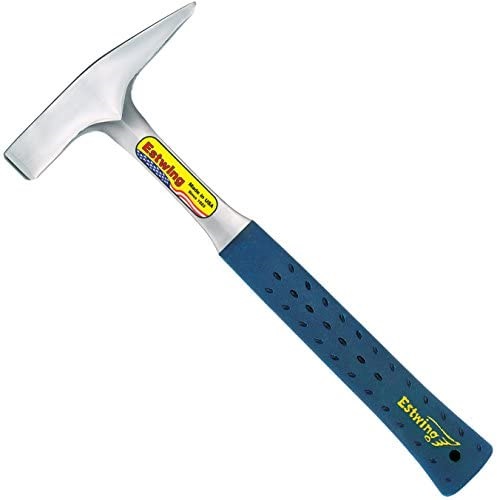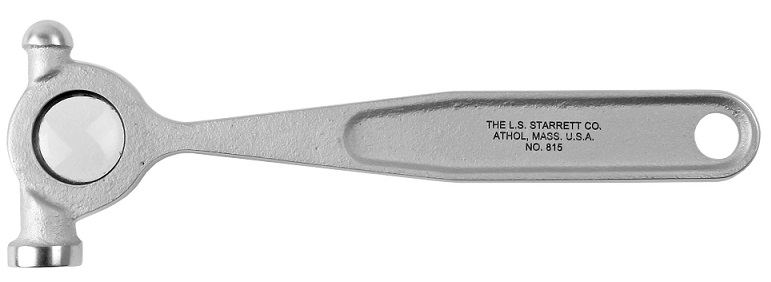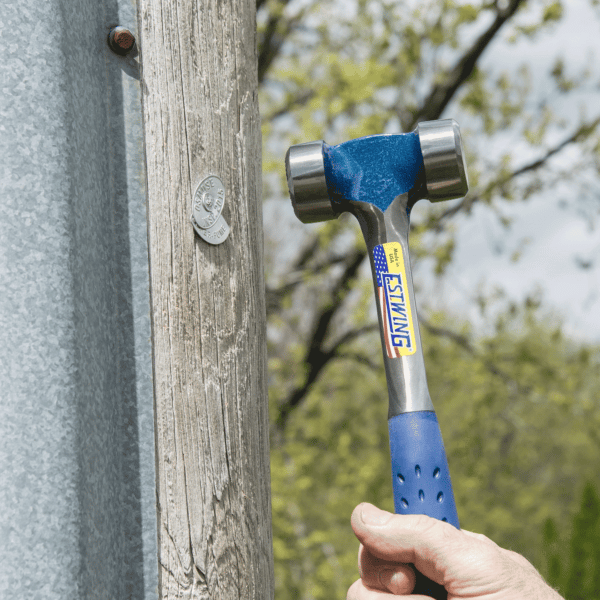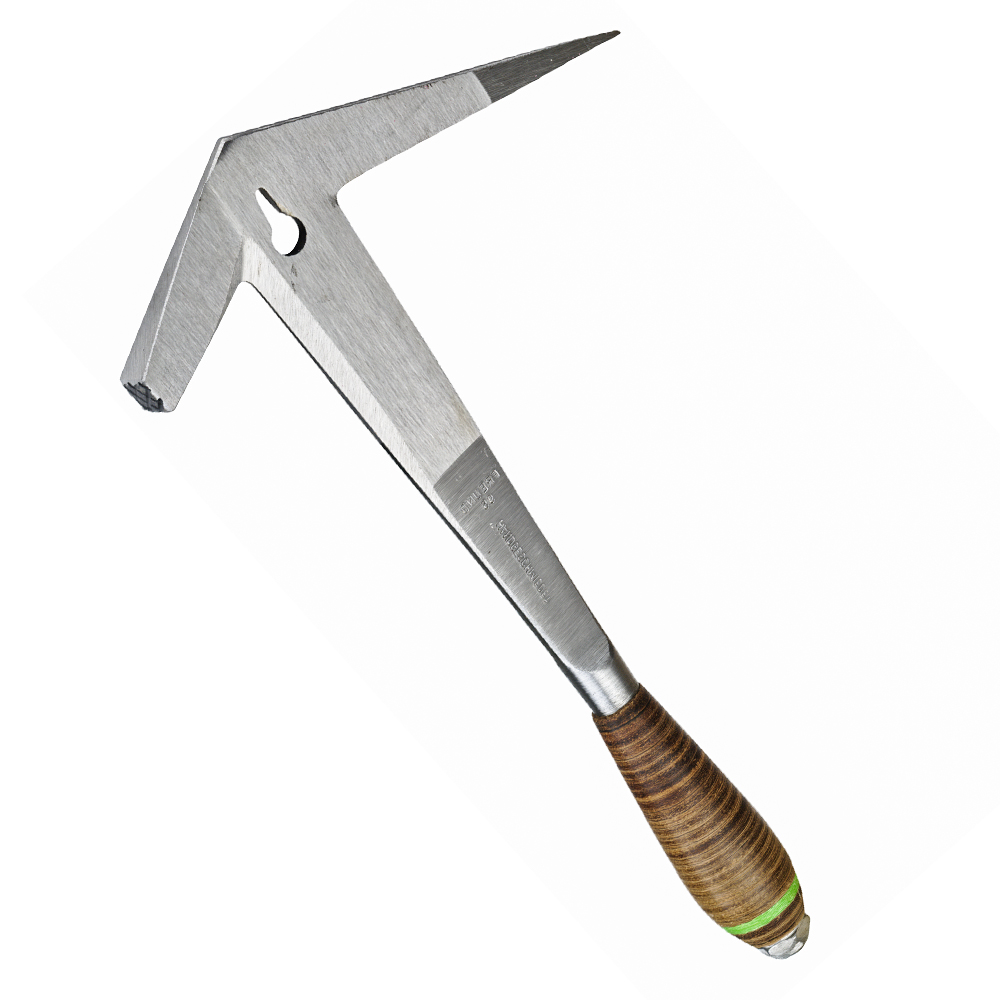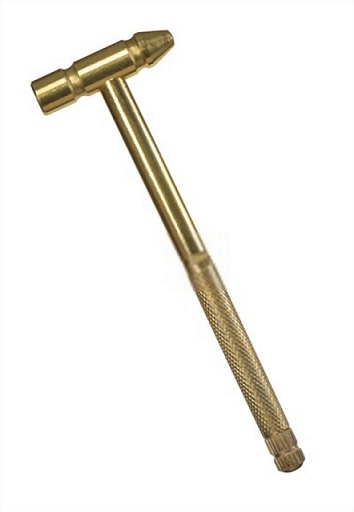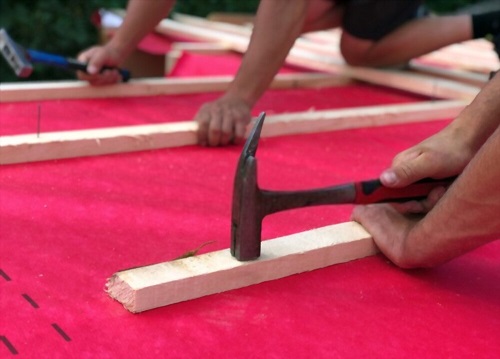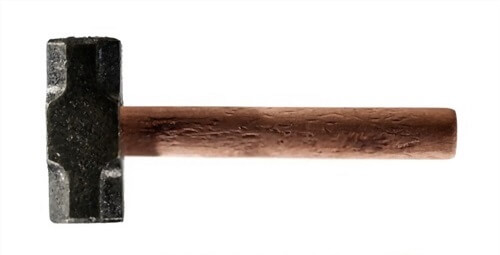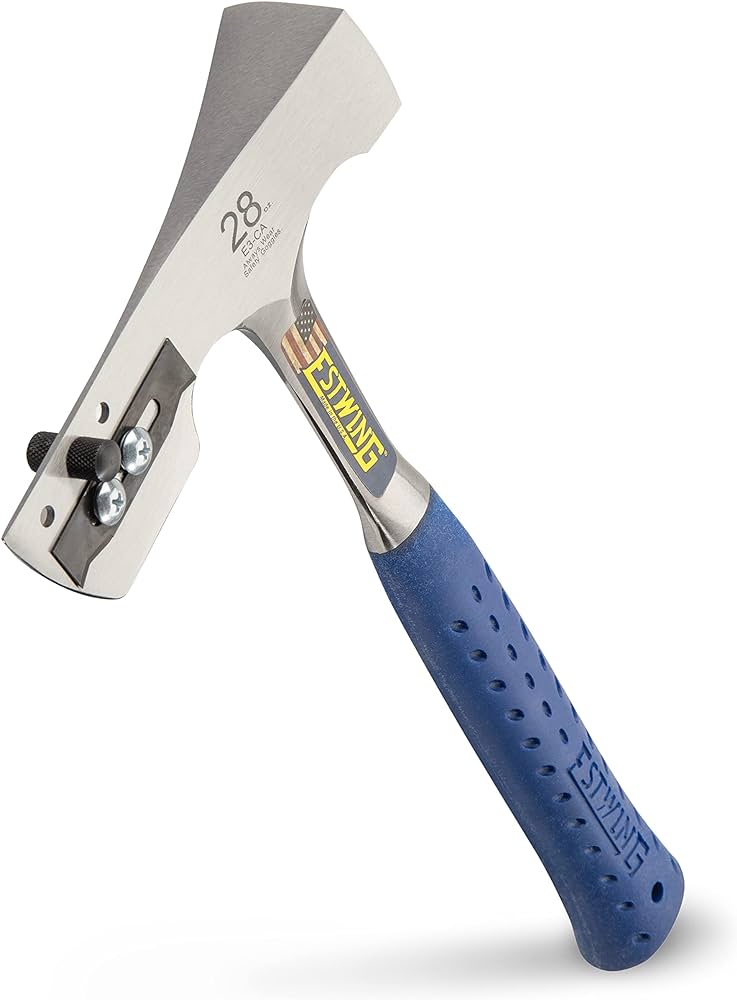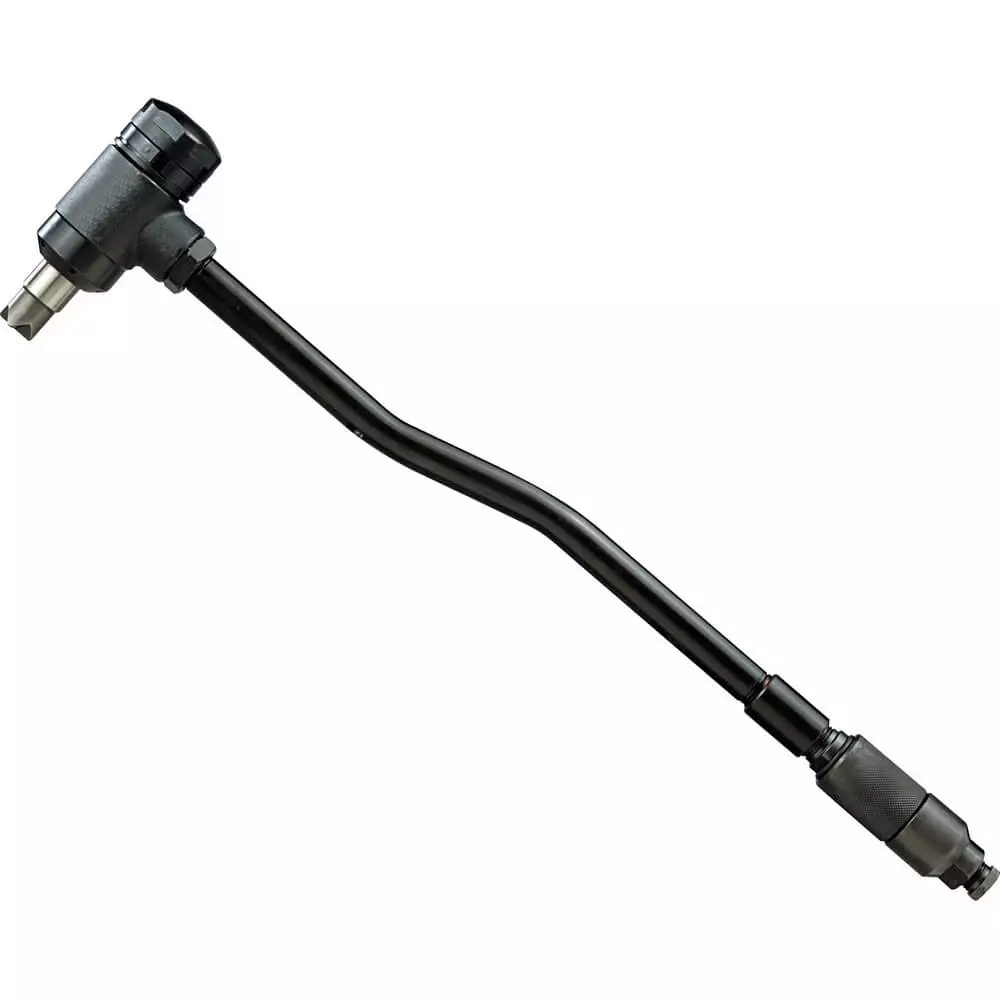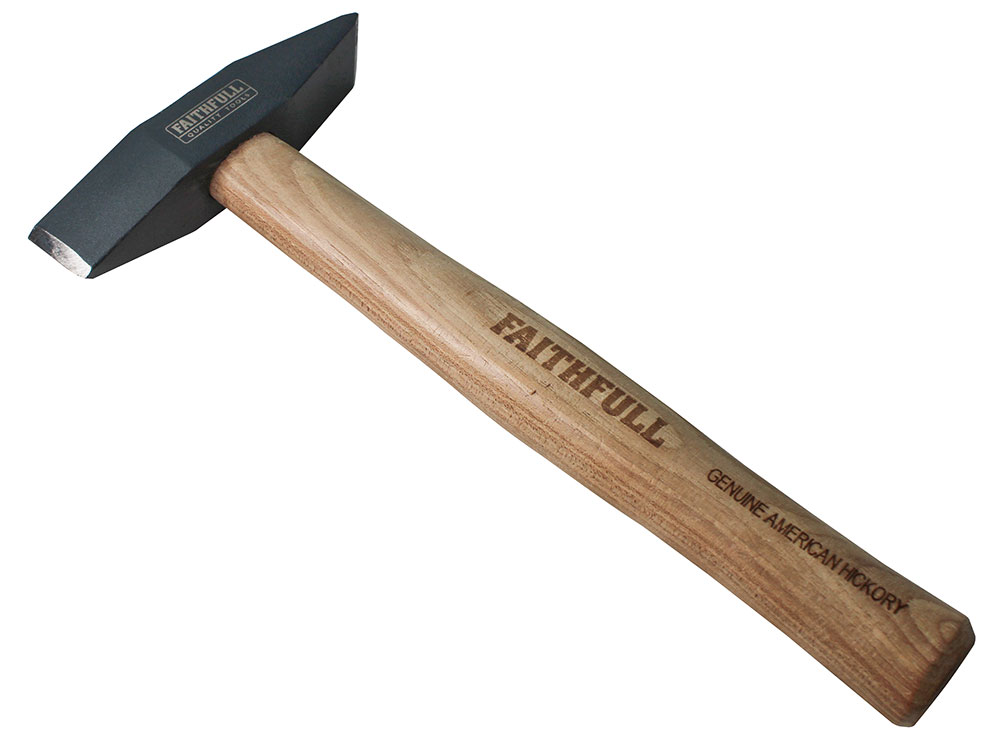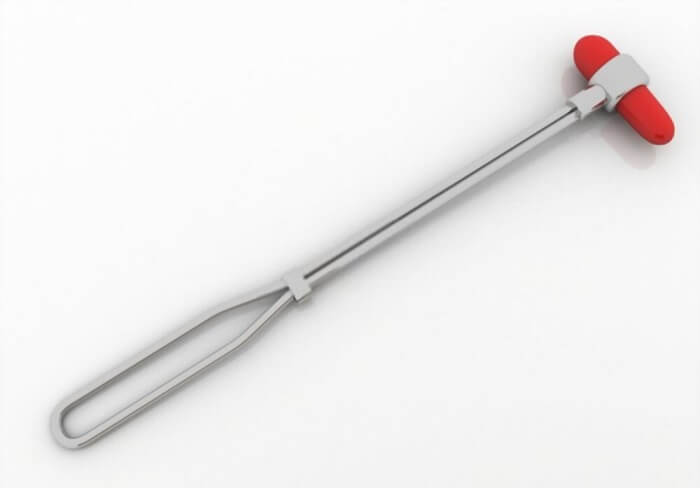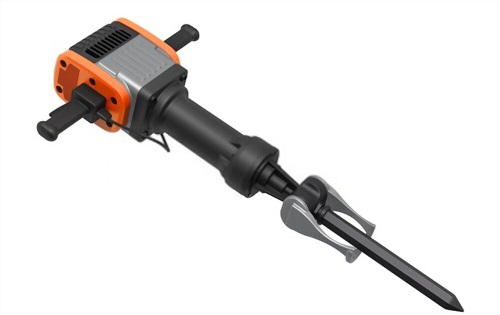50 Different Types of Hammers
The hammer, a timeless and indispensable tool, encapsulates the essence of human ingenuity and craftsmanship. Its design, simple yet versatile, has evolved over millennia. Today there are over 50 different types of hammers from rudimentary stone implements to finely forged metal heads affixed to sturdy handles. The essence remains unaltered: to deliver a forceful blow. In the hands of a skilled artisan, the hammer transforms from a mere tool into an extension of creativity, shaping raw materials into functional art. Its impact reverberates across countless industries, from construction to jewelry-making, a testament to its universal utility. The symphony of a hammer’s strike against an anvil or a surface resonates with the echoes of human history, connecting us to our ancient roots and the enduring legacy of this indispensable tool.
Hammer and Its Uses
Whether you’re a carpenter, metalworker, or involved in industries like automotive or construction, the hammer is a ubiquitous companion in your toolkit. This unassuming hand tool serves a fundamental purpose: delivering forceful impacts to objects.
The action of striking with a hammer is aptly termed “hammering.” Today’s hammers typically consist of a heat-treated steel head affixed to a handle made of wood, steel, or plastic. Among the many hand tools available, hammers stand out as indispensable assets, especially in woodworking applications.
Types of Hammers
Following is a list of different types of Hammers. The initial six are widely recognized, commonly used tools, whereas the subsequent ones are specialized, designed for specific tasks or industries.
1. Claw Hammer:
The claw hammer is one of the most versatile and widely used types of hammers. It features a flat striking surface on one side, which is used for driving nails into various materials, and a curved “claw” on the other side, designed for pulling nails out. This dual-purpose design makes it an essential tool for carpenters, DIY enthusiasts, and general construction work.
2. Framing Hammer:
The framing hammer is specifically engineered for heavy-duty construction tasks. It typically has a longer handle and a heavier head compared to a claw hammer, providing extra power and leverage for driving large nails into tough materials like lumber. Its waffled face helps to prevent slipping during use, making it an indispensable tool for framing and structural work.
3. Ball Peen Hammer:
The ball peen hammer is characterized by its distinctive rounded head on one side and a flat face on the other. It’s commonly used in metalworking applications, where it’s employed to shape and shape metal components. The rounded end is particularly useful for rounding off edges and riveting tasks, making it a staple in blacksmithing and metal fabrication.
4. Tack Hammer:
The tack hammer is a smaller, lightweight hammer designed primarily for precision work. It has a narrow, flat face on one side and a split-head or magnetic head on the other, allowing it to hold and drive small tacks, brads, or nails with accuracy. This makes it an indispensable tool for upholstery, woodworking, and other delicate tasks.
5. Sledgehammer:
The sledgehammer is a heavy-duty hammer with a large, flat head at one end and a long handle. It’s designed for powerful striking and is commonly used for tasks like demolition, driving stakes, or breaking through tough materials like concrete or stone. Due to its weight and size, it requires significant strength to wield effectively.
6. Mallet:
A mallet is a specialized hammer with a head made of softer material, such as rubber, wood, or plastic. It’s designed to deliver controlled blows without damaging delicate surfaces. Mallets find application in woodworking, cabinetry, and other tasks where a softer touch is required to avoid marring or denting.
7. Cross Peen Hammer:
The cross peen hammer features a flat face on one side and a wedge-shaped peen (pointed end) on the other. It’s particularly useful in metalworking for tasks like shaping, bending, and riveting. The peen allows for precise striking and is often used by blacksmiths and metalworkers to create intricate designs and textures.
8. Straight Peen Hammer:
Similar to the cross peen hammer, the straight peen hammer has a flat face on one side, but its peen is straight, rather than cross-shaped. This type of hammer is also utilized in metalworking, offering specific advantages for tasks like drawing out metal and creating straight lines or angles in the workpiece.
9. Cross Peen Pin Hammer:
The cross peen pin hammer is a smaller version of the cross peen hammer. It is lightweight and has a narrow, pointed peen opposite a flat face. This type is favored for more delicate metalworking tasks that require precision and control, such as jewelry making or fine-scale model crafting.
10. Club Hammer:
The club hammer, sometimes known as a lump hammer, has a double-faced head, with both sides being flat. It is characterized by its short handle, which provides better control and maneuverability in tight spaces. Club hammers are typically used for tasks like breaking concrete or driving chisels and wedges, making them a valuable tool in masonry and construction work.
11. Dead Blow Hammer:
The dead blow hammer is a specialized tool designed to minimize damage to surfaces upon impact. It contains a hollow head filled with lead or steel shot that absorbs and distributes the force of the blow, reducing rebound and ensuring a controlled strike. This makes it ideal for delicate tasks where precision and surface protection are paramount, such as automotive work or woodworking.
12. Blocking Hammer:
The blocking hammer is a sturdy, versatile tool widely used in metalworking and blacksmithing. It features a flat face on one end for striking and shaping metal, and a rounded or domed face on the other for smoothing and finishing. The blocking hammer’s ergonomic design provides excellent control, making it an essential tool for sculpting and refining metalwork.
13. Engineering Hammer:
The engineering hammer is a general-purpose tool with a flat, slightly crowned face on one end and a cross-peen on the other. It’s commonly employed in metalworking, particularly in forging and shaping tasks. The flat face delivers controlled strikes, while the cross-peen allows for precise shaping and detailing of metal pieces, making it indispensable in a metalworker’s toolkit.
14. Electrician’s Hammer:
Engineered for the specific needs of electricians, this hammer features a straight claw and a smooth face. Its relatively lightweight design facilitates easy handling and reduces fatigue during repetitive tasks. The straight claw is useful for removing nails or prying, while the smooth face ensures minimal marring of surfaces, making it suitable for electrical installations.
15. Blacksmith’s Hammer:
A fundamental tool in blacksmithing, the blacksmith’s hammer typically has a flat face on one end and a rounded or cross-peen on the other. This enables the blacksmith to manipulate and shape metal with precision. The flat face delivers controlled strikes for shaping, while the peen allows for finer detailing and forging work.
16. Blacksmith’s Sledge Hammer:
This heavy-duty hammer is a powerhouse in the blacksmith’s arsenal. It’s characterized by its large, double-faced design with flat surfaces on both ends. The substantial weight and force generated by the sledge hammer are crucial for striking heavy blows in forging processes, where significant material deformation is required.
17. Welder’s Hammer:
Designed specifically for welders, this tool combines a chisel-like edge for chipping and removing slag from welds, along with a pointed end for gouging and cleaning. It is an indispensable companion for welders, aiding in achieving clean and precise welds by effectively managing excess material.
18. Body Mechanic’s Hammer:
Body mechanic’s hammers are vital tools in auto body repair. They typically have a flat face for shaping and smoothing metal surfaces, and a pick on the opposite end for finer detailing work. This hammer allows mechanics to restore and refine the shape of automotive panels with accuracy and efficiency.
19. Tinner’s Hammer:
Tailored for the needs of tinsmiths and sheet metal workers, the tinner’s hammer boasts a cross-peen for creasing and folding metal, and a flat face for general shaping and striking. Its balanced design enables precise control, making it an indispensable tool in creating intricate and precise sheet metalwork.
20. Toolmaker’s Hammer:
Toolmaker’s hammers are finely crafted tools used in precision engineering and toolmaking. They are characterized by their accurately machined faces and meticulous weight distribution. These hammers play a critical role in the creation of precise, high-tolerance tools and components, ensuring the highest level of craftsmanship in manufacturing processe
21. Lineman’s Hammer:
Lineman’s hammers are essential tools for electrical linemen who work on power lines. They have a mallet-like head on one side for driving staples and a pointed end on the other for removing staples and aligning holes in utility poles.
22. Rock Hammer:
Also known as a geological hammer or rock pick, this tool is used by geologists and paleontologists for breaking and extracting rock samples from natural formations. It typically features a chisel-like head on one side and a pointed end on the other.
23. Slater’s Hammer:
Specially designed for roofers, slater’s hammers have a flat face for driving nails through slates and a claw-like end for splitting or removing damaged slates during roof repairs.
24. Rock Climbing Hammer:
A specialized tool used in rock climbing for driving pitons or other anchors into cracks and crevices in the rock face. It provides climbers with additional points of protection during ascents.
25. Piton Hammer:
Piton hammers, are one of the best types of hammers, used exclusively for aid climbing and mountaineering. They have a flat face for driving pitons into cracks or ice, ensuring secure anchors for climbers.
26. Brass Hammer:
Brass hammers are non-sparking tools used in environments where flammable materials are present. They are commonly employed in industrial settings, such as oil refineries or chemical plants, to reduce the risk of sparks.
27. Rip Hammer:
Rip hammers are a type of carpenter’s hammer designed for woodworking. They have a straight claw for efficient nail removal and a rippled face for gripping and pulling nails more easily.
28. Bushing Hammer:
Bushing hammers, are one of the best types of hammers, and are used by masons and stone workers to dress, shape, and smooth natural stones. They have a flat face and a chisel-like edge for precise stone carving.
29. Hatchet Hammer:
This dual-purpose tool combines the features of a hammer with a small hatchet, allowing it to drive nails and perform light chopping tasks. It’s commonly used in outdoor and camping settings.
30. Half Hatchet Hammer:
Similar to a hatchet hammer, the half hatchet hammer features a flat face for striking and a cutting edge for light chopping. It’s a versatile tool used in carpentry, woodworking, and outdoor activities.
31. Drywall Hammer:
Drywall hammer, are one of the unique types of hammers, specifically designed for hanging drywall, this hammer has a convex head for setting drywall nails slightly below the surface, making it easier to fill and finish joints.
32. Brick Hammer:
Brick hammers are used by masons for cutting and shaping bricks. They have a flat face for striking and a chisel end for splitting bricks cleanly.
33. Lath Hammer:
Lath hammers are used by carpenters for installing lath, a thin strip of wood used as a base for plaster or tile. They typically feature a flat face for striking and a pointed end for aligning lath strips.
34. Stone Sledge Hammer:
This heavy-duty sledgehammer is designed for breaking up large stones or concrete. It has a long handle and a large, flat face for powerful striking.
35. Copper and Hide Hammer:
A specialty hammer with a copper face for non-marring strikes and a hide or rawhide face for softer impacts. It’s used in metalworking and delicate assembly tasks.
36. Planishing Hammer:
Planishing hammers are used in metalworking to smooth out imperfections in metal surfaces. They have a round, polished head that delivers controlled, repetitive blows.
37. Trim Hammer:
Trim hammers are lightweight, compact hammers used in finishing carpentry. They have a smooth face and are designed for driving small finish nails without damaging delicate surfaces.
38. Chasing Hammer:
Chasing hammers are precision tools used by jewelers and metalworkers for intricate metal shaping and detailing. They typically have a flat face and a rounded end for precise strikes.
39. Knife-Edged Hammer:
This specialized hammer features a sharp, knife-like edge, making it useful for splitting and shaping wood. It’s commonly used by carvers and sculptors.
40. Shingle Hammer:
Shingle hammers are designed for roofing work. They typically have a hatchet-like blade for cutting shingles and a flat face for driving nails.
41. Splitting Maul Hammer:
A splitting maul is a heavy, wedge-shaped hammer used for splitting logs or large pieces of wood. It features a flat face for striking and a wedge-shaped head for effectively splitting wood along the grain.
42. Scaling Hammer:
Scaling hammers, are one of the interesting types of hammers, which are used in industries like shipbuilding and metalworking to remove rust, scale, and old paint from metal surfaces. They have a chisel-like edge for effective scaling.
43. Soft Face Hammer:
Soft face hammers have replaceable faces made of materials like rubber, plastic, or rawhide. They’re used in tasks where a non-marring strike is essential, such as delicate woodworking or metalworking.
44. Railroad Spike Maul Hammer:
Railroad spike mauls are heavy-duty hammers used in railway construction and maintenance. They have a flat face for driving spikes into railroad ties.
45. Boiler Scaling Hammer:
This specialized hammer is used in boiler maintenance to remove scale and deposits from the inside of boilers. It typically has a chisel-like edge for effective scaling.
46. Scutch Hammer:
Scutch hammers, are one of the unique types of hammers, and are used in masonry and stone working for removing excess mortar or chiseling stone. They have a flat face for striking and a scutch comb or chisel edge for scraping.
47. Dental Hammer:
A precision tool used in dentistry, dental hammers are used for minor adjustments and shaping of dental appliances and prosthetics. They have a small, finely crafted head for controlled strikes.
48. Gavel Hammer:
Gavel hammers are ceremonial mallets used by judges or presiding officers in courtrooms or meetings to signal the beginning or end of proceedings. They are typically made of wood.
49. Power Hammer:
A power hammer is a mechanical tool used in blacksmithing and metalworking. It delivers powerful and controlled blows to shape metal using compressed air, steam, or mechanical means.
50. Jackhammer:
Jackhammers, also known as pneumatic drills or demolition hammers, are powerful tools used in construction for breaking up concrete, asphalt, and other hard materials. They operate using compressed air and have a chisel-like bit for impactful strikes.
Parts of a Hammer
Following is the parts of hammer
- Head: This component is responsible for delivering the impact during the hammering process. Typically constructed from metal, though sometimes glass, wood, or rubber may also be utilized. The hammer head can vary in size, shape, and weight based on its intended use and the type of hammer.
- Face: The front surface of the hammer that makes direct contact with the object being hammered. Depending on the specific type of hammer, the face may exhibit different shapes and dimensions. Additionally, certain hammers feature a textured face, allowing for special and distinctive finishes on metal or wood.
- Handle: As the name implies, it’s the portion of the hammer that provides a grip for the user. While most hammers feature a wooden handle, some may incorporate handles made of metal or plastic.
- Neck: This section of the hammer serves as the connection point between the head and the handle.
- Peen/Claw: Located opposite the face, the claw is utilized for extracting nails, while the peen is employed for working on metals through a process known as peening. When purchasing a hammer, it’s important to decide whether it should come equipped with a claw or a peen.
- Grip: In the case of a metal handle, a rubber grip helps prevent the hammer from slipping out of the user’s hands. Hammers with wooden handles typically do not include a grip for this purpose.
Types of Hammers: Conclusion
The diverse array of hammers and their specialized designs exemplify the remarkable adaptability of this age-old tool. From the precision of a jeweler’s delicate taps to the thunderous force of a blacksmith’s strike, each type serves a distinct purpose, reflecting the ingenuity and craftsmanship of humanity. Whether it’s the controlled finesse of a chisel hammer or the brute power of a jackhammer, hammers remain essential in various industries and trades. They stand as a testament to the enduring legacy of a tool that has shaped civilizations, leaving an indelible mark on the world of craftsmanship, construction, and beyond.
